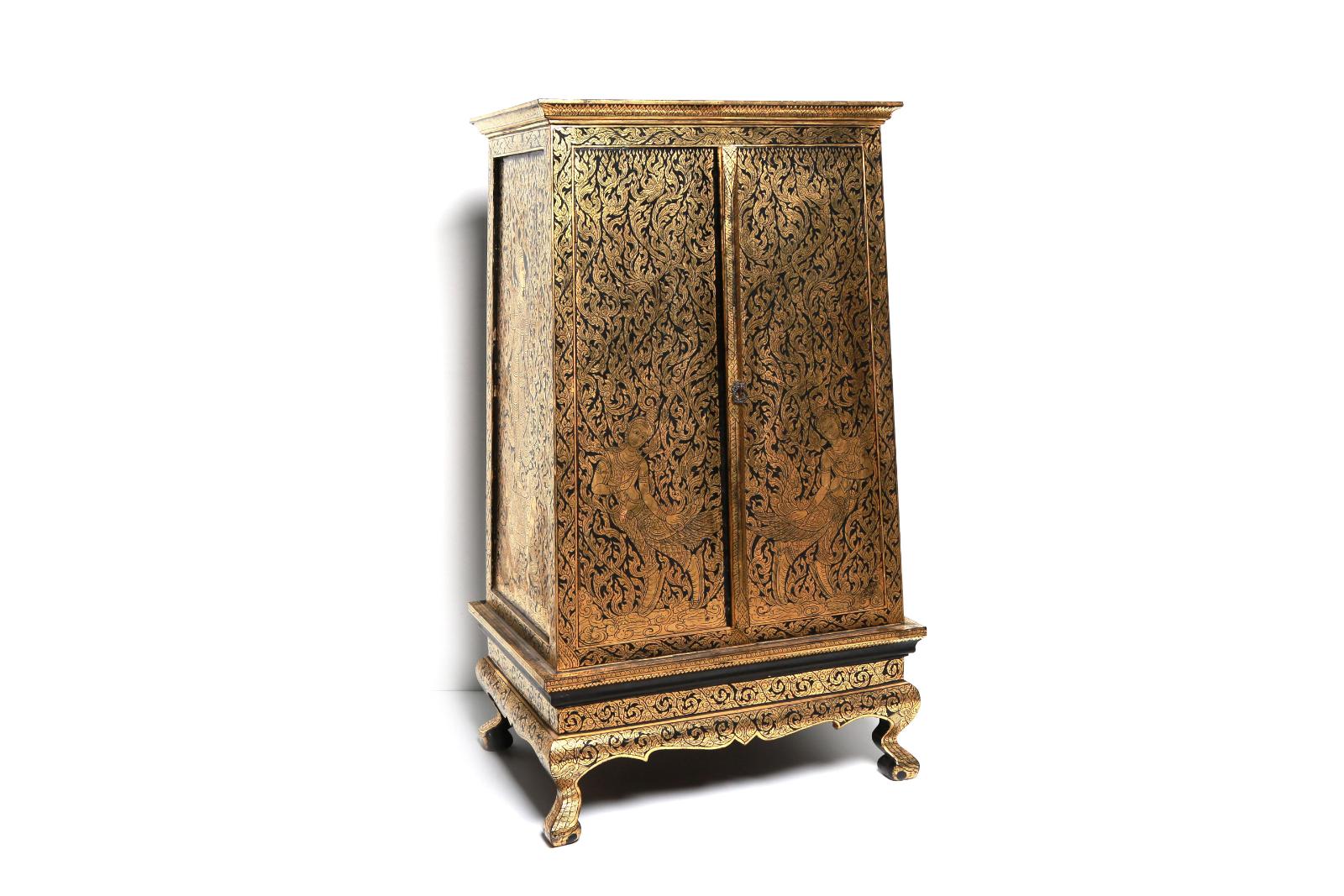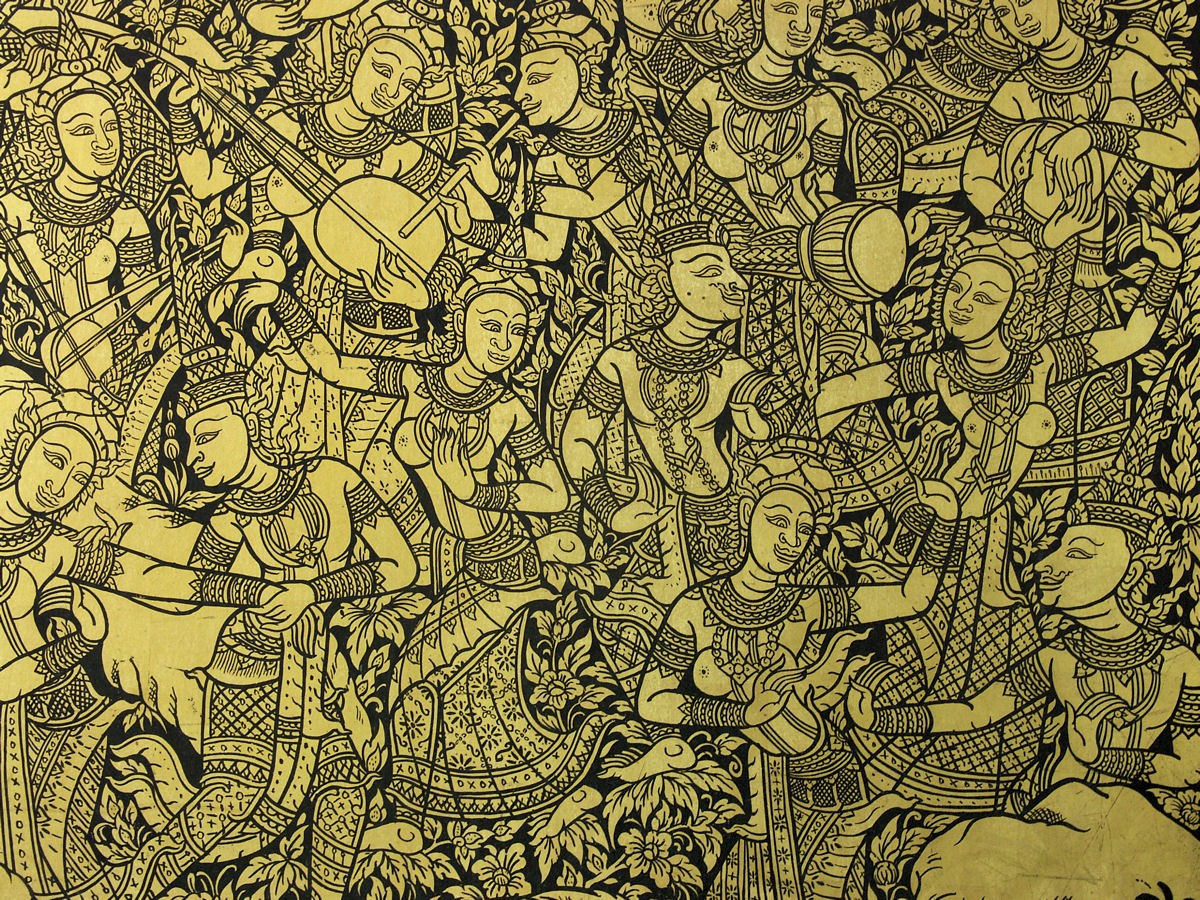Thailand
by Kenta Takeshige
In Thailand, lacquer is called Yang Rak or Ton Rak.
The history of Thai lacquer art is unclear: it is believed that the Kern tribe, while moving from southern China to Chiang Mai in northern Thailand, brought along lacquer art. The Thai word for lacquerware is still Kreung Kern, a remnant of this conviction.
In 1296 the Kingdom of Lan Na was founded in the Chiang Mai area in northern Thailand. It became the center of Thai lacquer art. The lacquer crafts produced in this region are called Lan Na lacquer and are mostly items for everyday use, using woven or ringed bamboo as substrates. Later on, during the Ayutthaya dynasty, arts & crafts developed to a high degree under the patronage of the royal family. Especially in the late Ayutthaya era, Thai lacquer art reached its golden age. Gorgeous lacquer crafts were made using the techniques of Mother-of-Pearl and gold leaf painting which is called "Lai Rot Nam".

Thai lacquer techniques
This technique uses a wooden base coated with several layers of black lacquer as a background. The desired design is then traced onto this, and any areas that should remain black are overcoated with a yellow, viscous, water-soluble adhesive. The next step is to apply a thin layer of lacquer to the surface, and once it is semi-dry, gold leaf is applied to the entire surface. After approximately 20 hours, the piece is washed with water and the viscous adhesive is removed, revealing the black background and leaving the gold leaf fixed with lacquer in the areas not covered with adhesive.
Due to the application and washing of gold leaf, this technique is called "Lai Pit Thong Rot Nam" (water-based gold leaf pattern), but is often shortened to "Lai Rot Nam" (water-based pattern).

Other Thai lacquer techniques include "Lai Kam Lan Na" and "Lai Khut". Lai Kam Lan Na is a kind of scratch painting: a free drawing is scratched into the gold leaf with a needle.
Lai Khut, similar to Myanmar lacquer technique Kanyit, was introduced to Japan during the Edo period and transformed into the Kagawa regional technique named Kinma.
Because sap collection is prohibited in Thailand at present to protect lacquer trees, Thailand has to import all lacquer sap from Myanmar.
